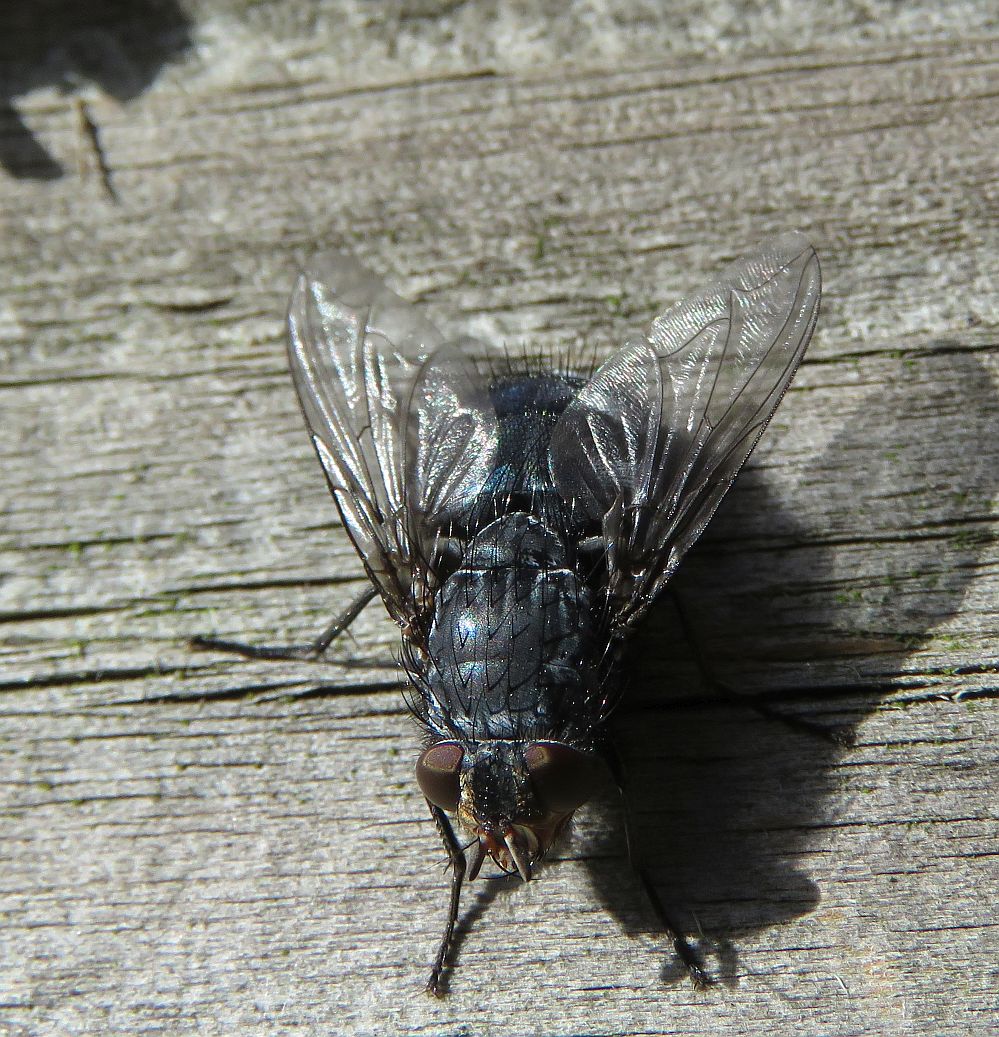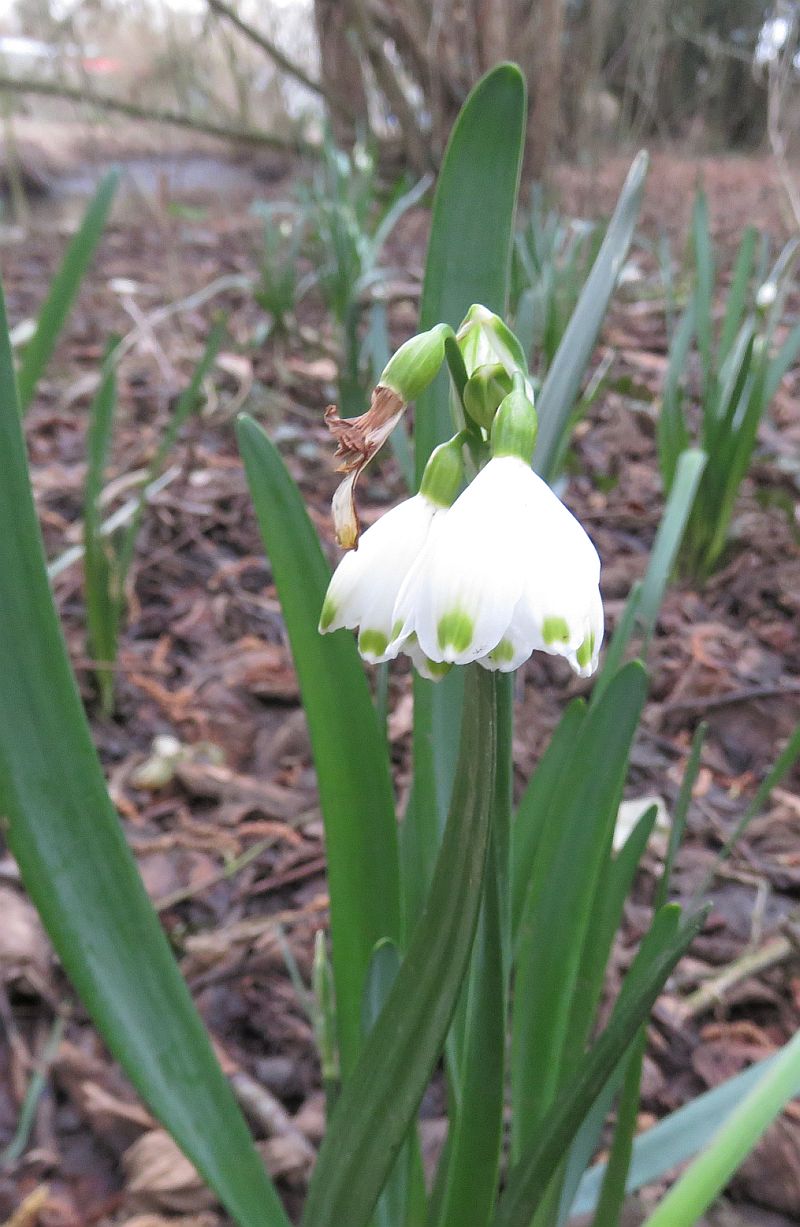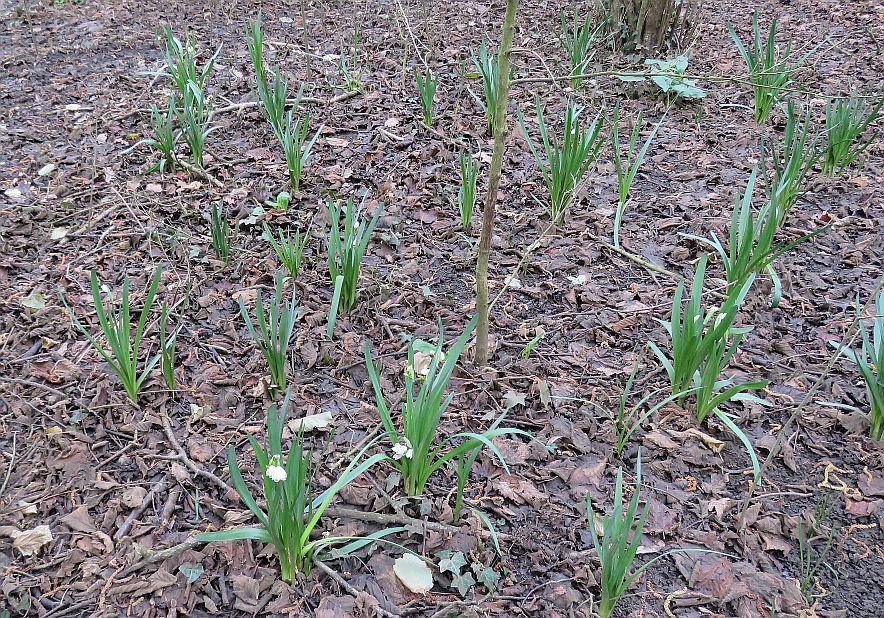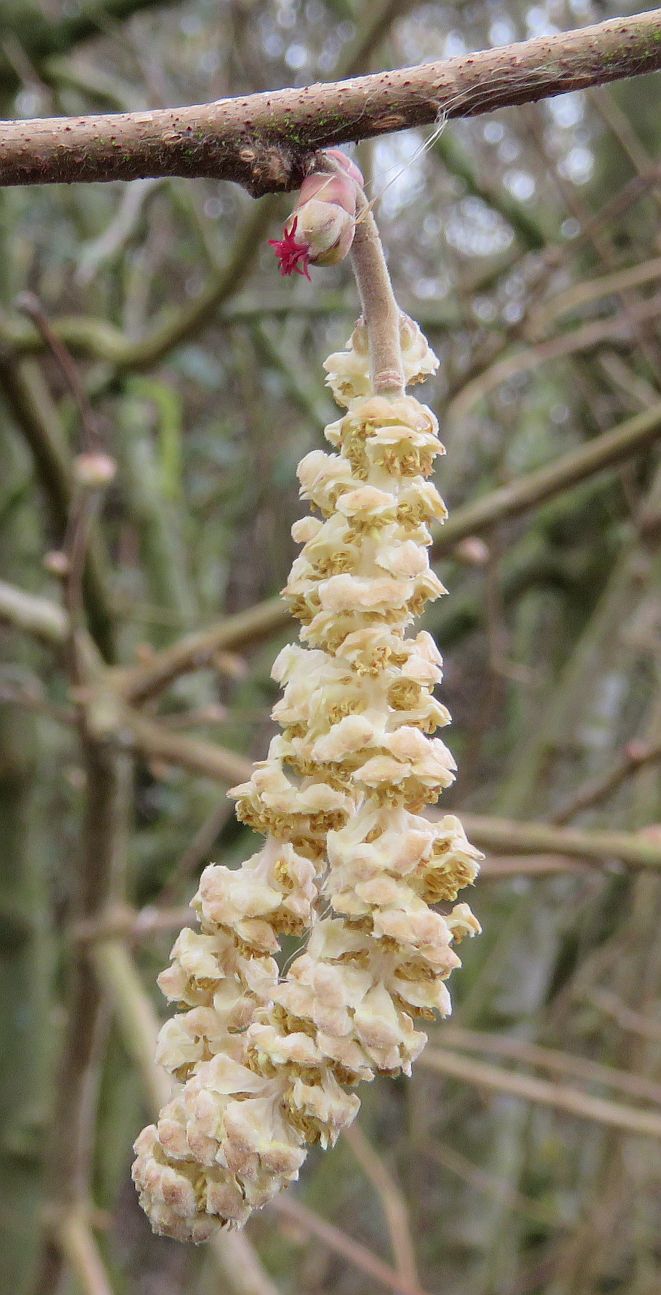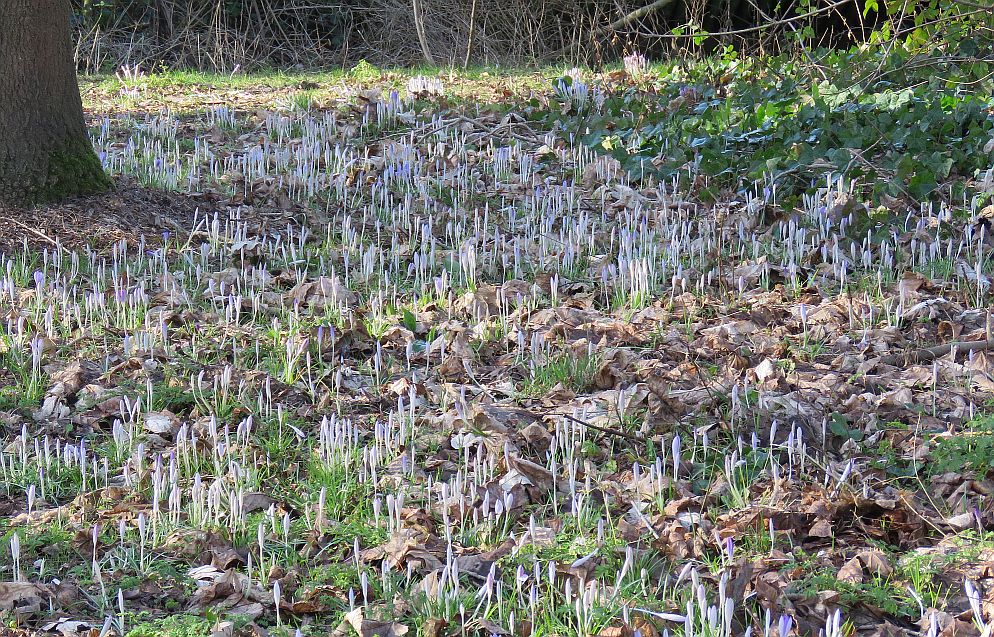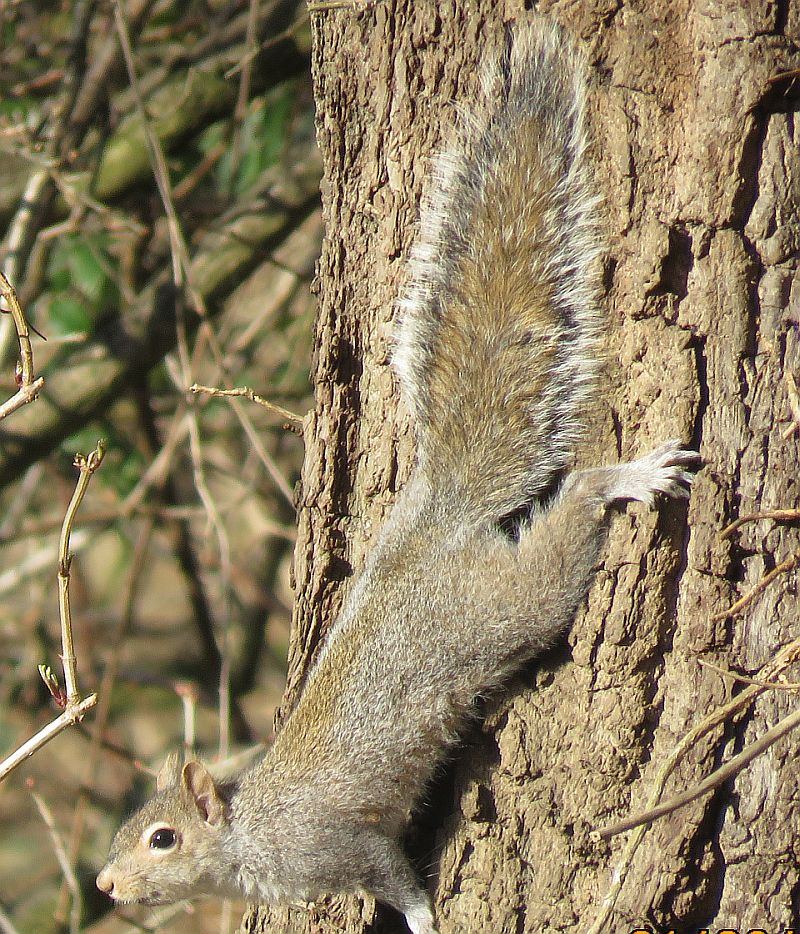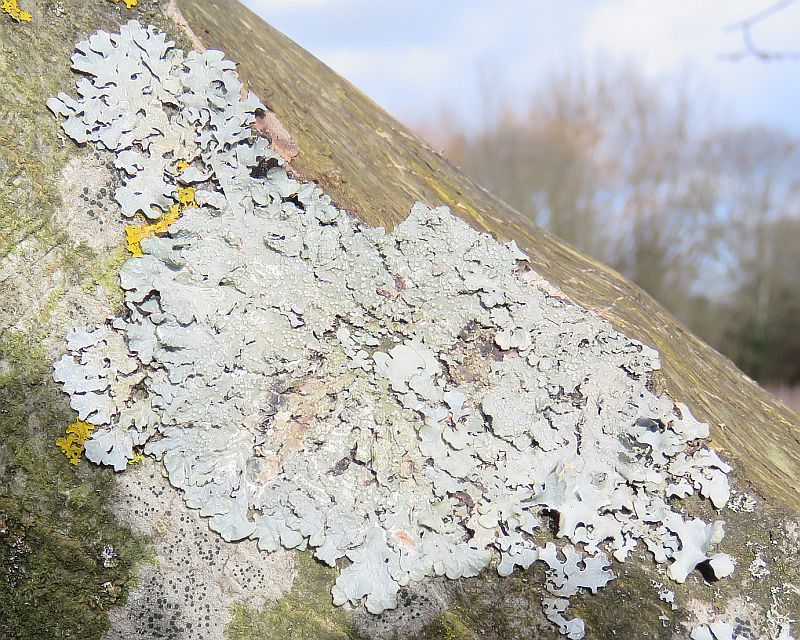Birds
25/02/18
In Area 4 by Kingfisher Bridge a Grey Wagtail was feeding by the river bed.My first for the year. A Nuthatch was calling from nearby trees.
23/02/18
3 Hawfinch were feeding in the Area 10 carpark field copse seen by Paul Bright Thomas this morning.An additional 2, also flew over S.
21/02/18
 A small walk through Area 5 this morning. During which I saw a pair of Mallard on the pond,2 Siskin feeding off the Alder cones, by the pond.10 Redwing feeding off the grassed area, with 6 Blackbird . My pair of garden Dunnock were singing from first light, and a Nuthatch was visiting my garden feeders.
A small walk through Area 5 this morning. During which I saw a pair of Mallard on the pond,2 Siskin feeding off the Alder cones, by the pond.10 Redwing feeding off the grassed area, with 6 Blackbird . My pair of garden Dunnock were singing from first light, and a Nuthatch was visiting my garden feeders.
18/02/18
In Area 4 a Little Egret flew E along the Emm Brook, a Common Gull flew N, a Fieldfare flew low S and 5 Lesser Redpoll were all seen by Paul Bright Thomas.
17/02/18
A distant Tawny Owl was heard calling at 01:40, this morning in Area 5. Following an operation, I am reduced to looking out the house windows. Highlight so far 6 Lapwing flying East. A Barn Owl was seen sitting on the fence post in Lavells Lake car park field by Fraser Cottington.
16/02/18
 In and aound my Area 5 garden feeders were Collared Dove , Goldfinch, Dunnock and a lot of Wood Pigeon .
In and aound my Area 5 garden feeders were Collared Dove , Goldfinch, Dunnock and a lot of Wood Pigeon .
15/02/18
A male Sparrowhawk was ween flying over the Car Park Field in Area 10 by Bob Bennett.
13/02/18
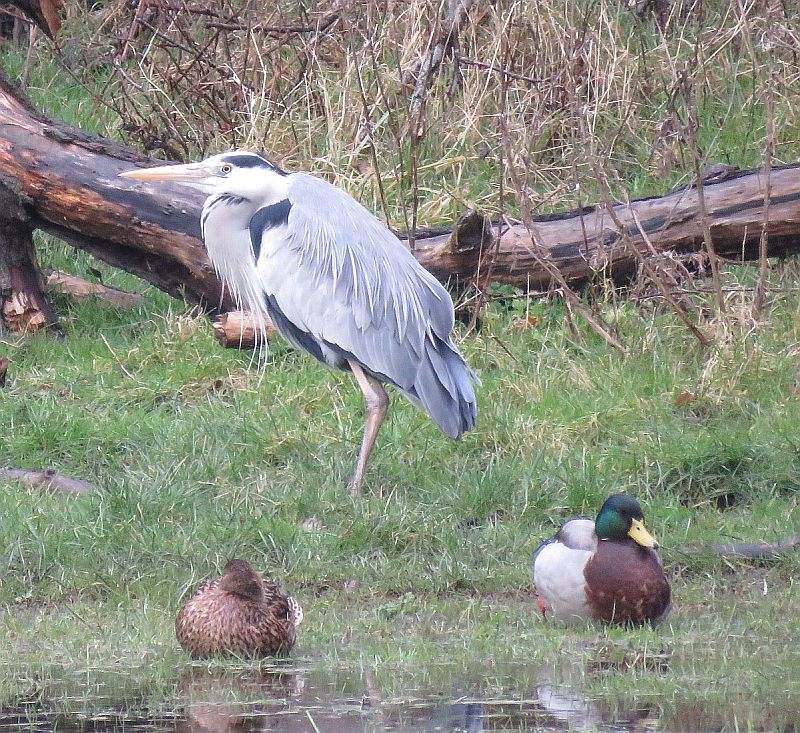 A visit to Area 1 around Ludgrove at Lunchtime was much as expected .Approx 12 Mallard and a Grey Heron were on the flooded fields. Jackdaw , Rook and Black headed Gulls were enjoying the fields with the Cows. Despite the rain, Red Kite were hunting overhead. 6 Redwing were moving between the field and the hedgerows.
A visit to Area 1 around Ludgrove at Lunchtime was much as expected .Approx 12 Mallard and a Grey Heron were on the flooded fields. Jackdaw , Rook and Black headed Gulls were enjoying the fields with the Cows. Despite the rain, Red Kite were hunting overhead. 6 Redwing were moving between the field and the hedgerows.
12/02/18
4 Lesser Redpoll and a Green Woodpecker were seen in Area 4 by Paul Bright Thomas.
11/02/18
In the Area 10 car park field copse a Fieldfare and a Hawfinch were seen by Bob Bennett.
A Great spotted Woodpecker was also seen to the left of the field.
10/02/18
5 Hawfinch were seen flying over the Area 10 (Lavells Lake) car park field with 3 landing in the copse. Seen by Fraser Cottington.
07/02/18
Paul Bright-Thomas was out and about again in Area 4 and saw a Lesser Redpoll with 3 Siskin a Song Thrush and a garden Goldcrest.
05/02/18
In Area 1 this morning a Little Egret was seen standing in the Emm Brook by Barkham Road Bridge, by Peter Burden. What was probably the same bird was seen later flying west along the Emm and 8 Lesser Redpoll were in the trees by the Balancing Pond both sightings by Paul Bright-Thomas .
03/02/18
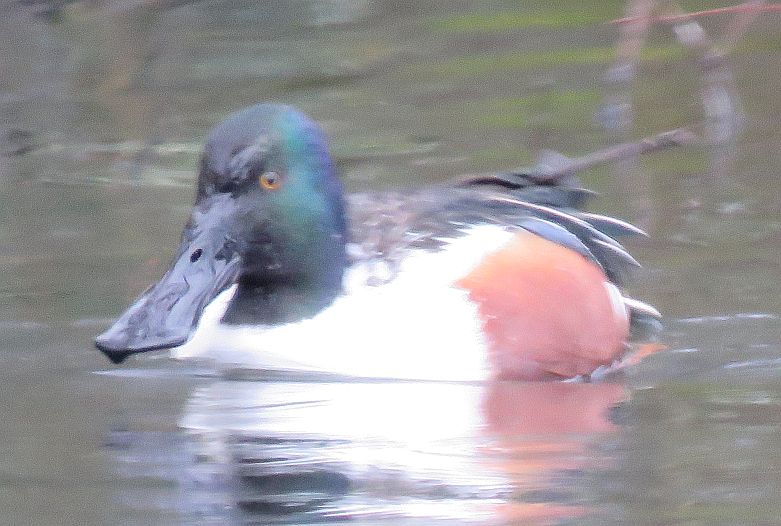 I decided to go to Area 1 and Heathlake in the drizzle this morning. On the lake, were Mallard, male and female Gadwall,male and female Pochard, Tufted Duck and a lone male Shoveller. In the picture you can see its spatulate bill. On the island were the usual Grey Heron and Cormorrant sitting in the trees . Great spotted Woodpecker was heard drumming. I then visited the area around Ludgrove School. On the flooded fields were 4 Canada Goose , a pair of Teal, 13 Mallard and an Egyptian Goose . A Green Woodpecker was heard calling in the woods to the rear.
I decided to go to Area 1 and Heathlake in the drizzle this morning. On the lake, were Mallard, male and female Gadwall,male and female Pochard, Tufted Duck and a lone male Shoveller. In the picture you can see its spatulate bill. On the island were the usual Grey Heron and Cormorrant sitting in the trees . Great spotted Woodpecker was heard drumming. I then visited the area around Ludgrove School. On the flooded fields were 4 Canada Goose , a pair of Teal, 13 Mallard and an Egyptian Goose . A Green Woodpecker was heard calling in the woods to the rear.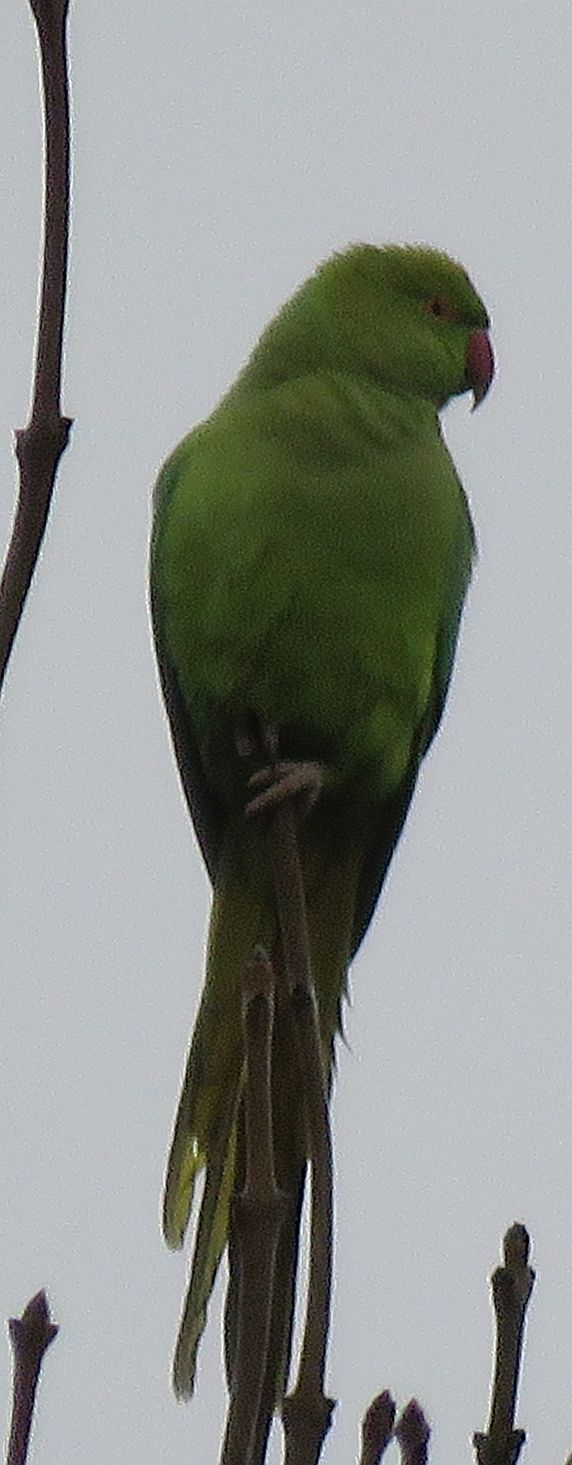 Along the path back towards Luckley Road numerous Jackdaw were in the fields and both Buzzard and Red Kite were on the wing. 2 Mistle Thrush flew over with their distinctive rattling call. A Ring necked Parakeet was calling from the treetops. In Area 10 a male Bullfinch was in the copse in the Lavells Lake car park field seen by Patrick Crowley.
Along the path back towards Luckley Road numerous Jackdaw were in the fields and both Buzzard and Red Kite were on the wing. 2 Mistle Thrush flew over with their distinctive rattling call. A Ring necked Parakeet was calling from the treetops. In Area 10 a male Bullfinch was in the copse in the Lavells Lake car park field seen by Patrick Crowley.
01/02/18
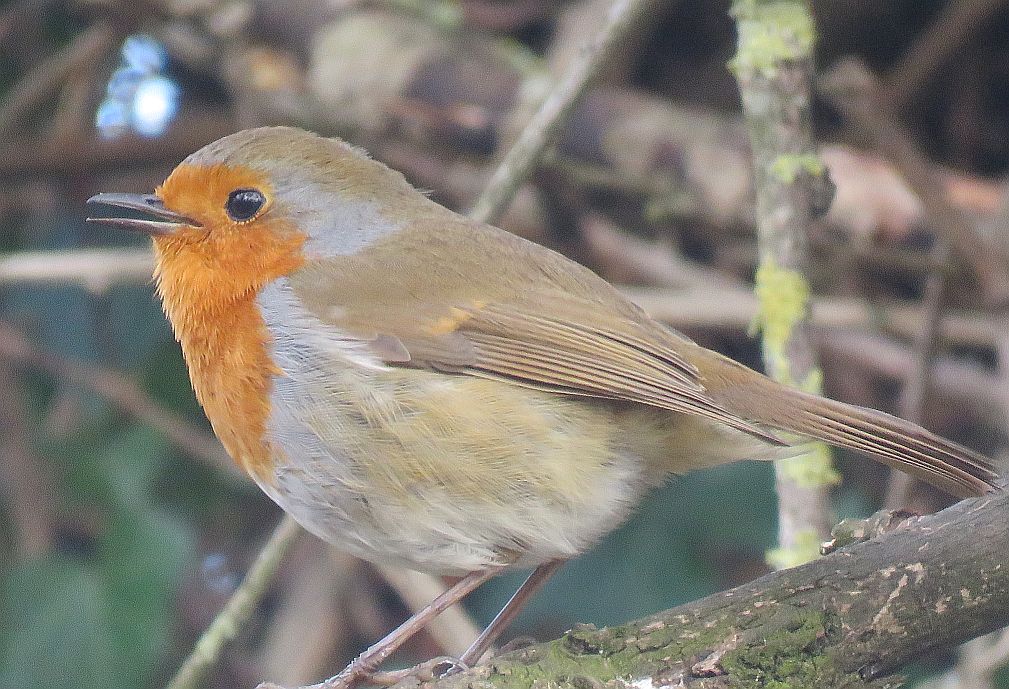 This Robin was singing away at lunchtime by Ripplestream Bridge in Area 4. In total 26 species of bird's were seen in Area's 4 & 5. Highlights were Coat Tit and 4 Greenfinch on my garden feeders. A Kingfisher perched on the bushes by the river at Kingfisher Bridge and 2 Lesser Redpoll were in the trees and a pair of Mallard were on the river. Down behind Morrisons, 10
This Robin was singing away at lunchtime by Ripplestream Bridge in Area 4. In total 26 species of bird's were seen in Area's 4 & 5. Highlights were Coat Tit and 4 Greenfinch on my garden feeders. A Kingfisher perched on the bushes by the river at Kingfisher Bridge and 2 Lesser Redpoll were in the trees and a pair of Mallard were on the river. Down behind Morrisons, 10 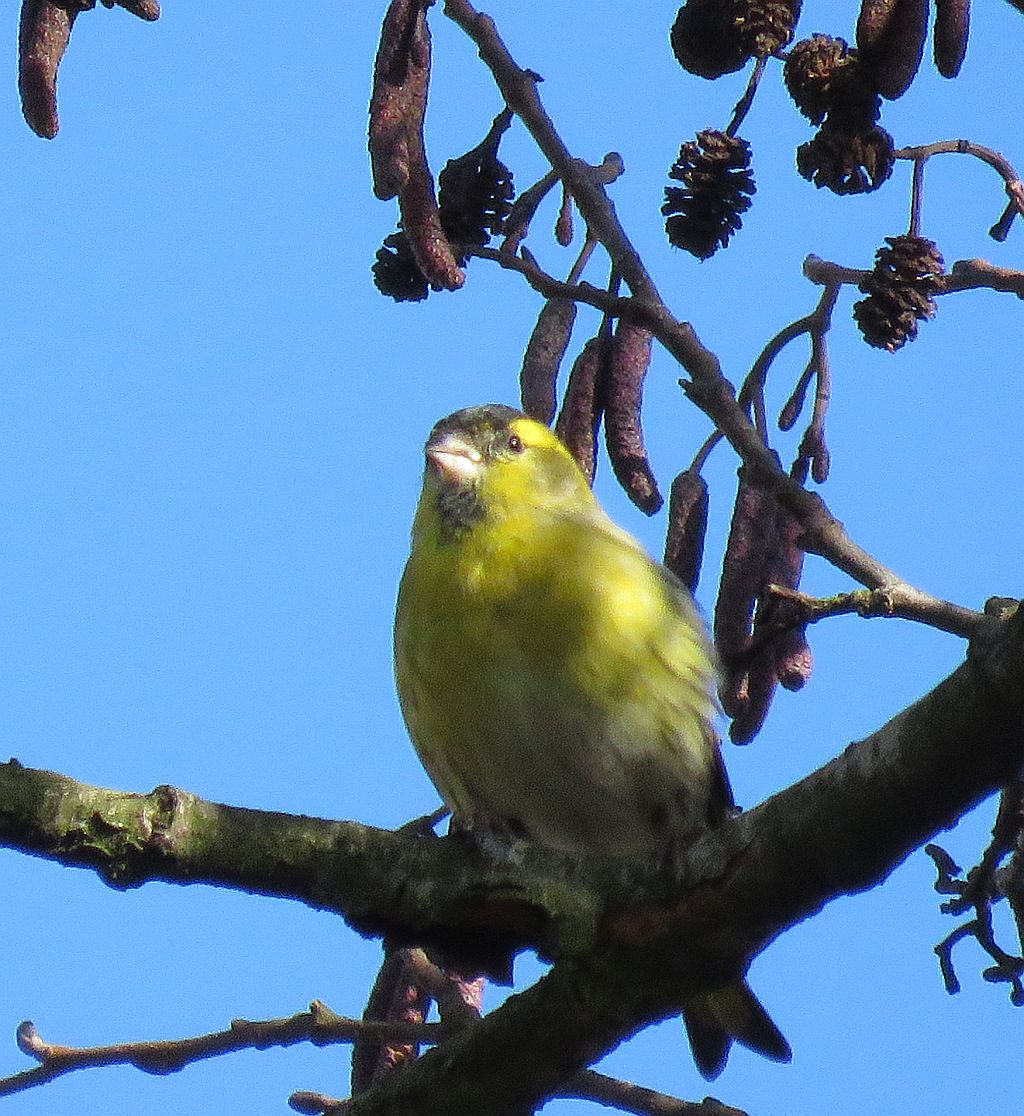 Redwing were feeding in the grass and a Siskin was feeding in the Alders. A Stock Dove and a Mistle Thrush also flew over.A male Hawfinch was in the copse in the car park field in Area 10 seen by John McGowan.
Redwing were feeding in the grass and a Siskin was feeding in the Alders. A Stock Dove and a Mistle Thrush also flew over.A male Hawfinch was in the copse in the car park field in Area 10 seen by John McGowan.








